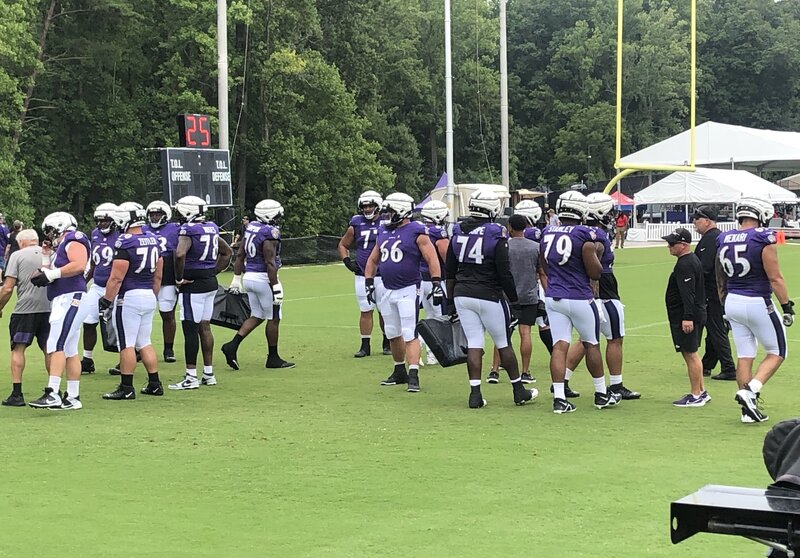Arguments against the NFL increasing the regular season to 17 games were obvious, much like the opposition to expanding the playoff field to 14 teams last year.
If you’re reading this space, chances are you’ll still watch and enjoy these extra games because you love football — even if you feel conflicted about it from time to time. That’s why the NFL made its worst kept secret official on Tuesday, expanding its regular season for the first time in 43 years despite protests from some players calling out the hypocrisy of a league that so often pats itself on the back over claiming to care about player health and safety. But that union fight ended when the new collective bargaining agreement was signed last year.
Even looking beyond the consequences of an additional game on the health of players — please spare me Roger Goodell’s false equivalence of subtracting a preseason contest — the loss of the symmetry of a 16-game schedule is an annoyance at the very least. While a team finishing 12-4, 8-8, or 4-12 is familiar, a 12-5, 9-8, or 4-13 record will look and sound weird for quite some time.
Also consider the implications on league and team record books that have already been warped by rules changes over the years. Ravens quarterback Lamar Jackson now plays a regular season nearly 42 percent longer than the 12-game schedules the legendary Johnny Unitas played at the start of his Hall of Fame career with the Baltimore Colts. For context, imagine if baseball had a 220-game regular season today compared to the 154 games played annually until 1961. (And fans were angry about Roger Maris having eight additional games to break Babe Ruth’s home run record!)
A 17th game on the NFL schedule likely would have resulted in three more 4,000-yard passing seasons for Joe Flacco, who had just one in his 11 years with Baltimore. Alex Collins very likely would have eclipsed 1,000 rushing yards in his surprising 2017 campaign while Kamar Aiken (2015) and Mark Clayton (2006) easily could have joined what’s been a sparse 1,000-yard receiving club over the Ravens’ first quarter century.
Those examples reflect why it’s more important than ever to emphasize rates over volume when celebrating statistics, something we should be doing anyway for a more complete picture. It was already kind of silly that we recognize seven 2,000-yard rushing campaigns as “better” than O.J. Simpson running for 2,003 yards in 1973 when he was the only one to eclipse that mark in a 14-game season, but imagine how many more 2,000-yard seasons are possible with another contest added to the schedule.
It goes beyond merely looking at numbers at a “per game” level, however. Though Simpson’s 1973 was the best of the 2,000-yard campaigns in terms of rushing yards per game, Barry Sanders averaging 6.1 yards per carry in 1997 was tops among the eight 2,000-yard rushing seasons in NFL history when looking at yardage for each rush.
Of course, there are many variables to consider when evaluating performance — some impossible to quantify — but that doesn’t mean we should just settle for the lowest common denominator. As much as we view a 100-yard rushing day as a standard of excellence for a running back, accomplishing that in just 13 carries is way more impressive and efficient than a bell cow back getting the ball 29 times to slog across the century mark. A 300-yard passing performance on 20 or 25 attempts is vastly superior to a quarterback needing to chuck the ball 55 or 60 times.
Context matters.
That’s why we should stop labeling the Ravens as the “worst” passing attack in the NFL solely because they finished 32nd in passing yards per game in 2020. The popular use of such per-game yardage stats as the be-all and end-all isn’t as bad as hearing someone try to cite a pitcher’s win-loss record as remotely meaningful in 2021, but you probably get the point.
Make no mistake, marked improvement in the passing department is absolutely necessary for Baltimore to get over the hump in January, but anyone who sincerely believes the Ravens were an inferior passing team to the likes of the New York Jets, Washington, or Denver last season probably didn’t watch those teams very often.
A team rushing for over 3,000 yards and averaging 5.5 yards per carry in back-to-back seasons — something that had never been done in NFL history, mind you — is never going to be a high-volume passing outfit. In their record-setting 2019 season, the Ravens ranked 12th in yards per passing attempt and first in Football Outsiders’ passing DVOA metric as Jackson led the NFL in touchdown passes and was the unanimous league MVP. Few even noticed that 14-2 team finishing 27th in passing yards per game until the crushing playoff loss to Tennessee.
In contrast, last year’s Ravens ranked 18th in yards per pass attempt and 17th in passing DVOA. No, the passing game wasn’t good enough in 2020, but it was much more “mediocre” than “terrible” if we make even a small effort to look beyond volume and consider efficiency.
That’s a lesson we’ll hopefully remember as the NFL moves forward with a 17-game regular season that will further warp the record books and require more nuance to compare players and teams across different generations. After all, it was just last season that Flacco passed both Unitas and Joe Montana on the career passing yards list.
Below is the Ravens’ updated 2021 slate of opponents with a home game against the Los Angeles Rams officially added on Tuesday:
HOME: Cincinnati, Cleveland, Pittsburgh, Green Bay, Indianapolis, Kansas City, Los Angeles Chargers, Los Angeles Rams, Minnesota
AWAY: Cincinnati, Cleveland, Pittsburgh, Chicago, Denver, Detroit, Las Vegas, Miami
































